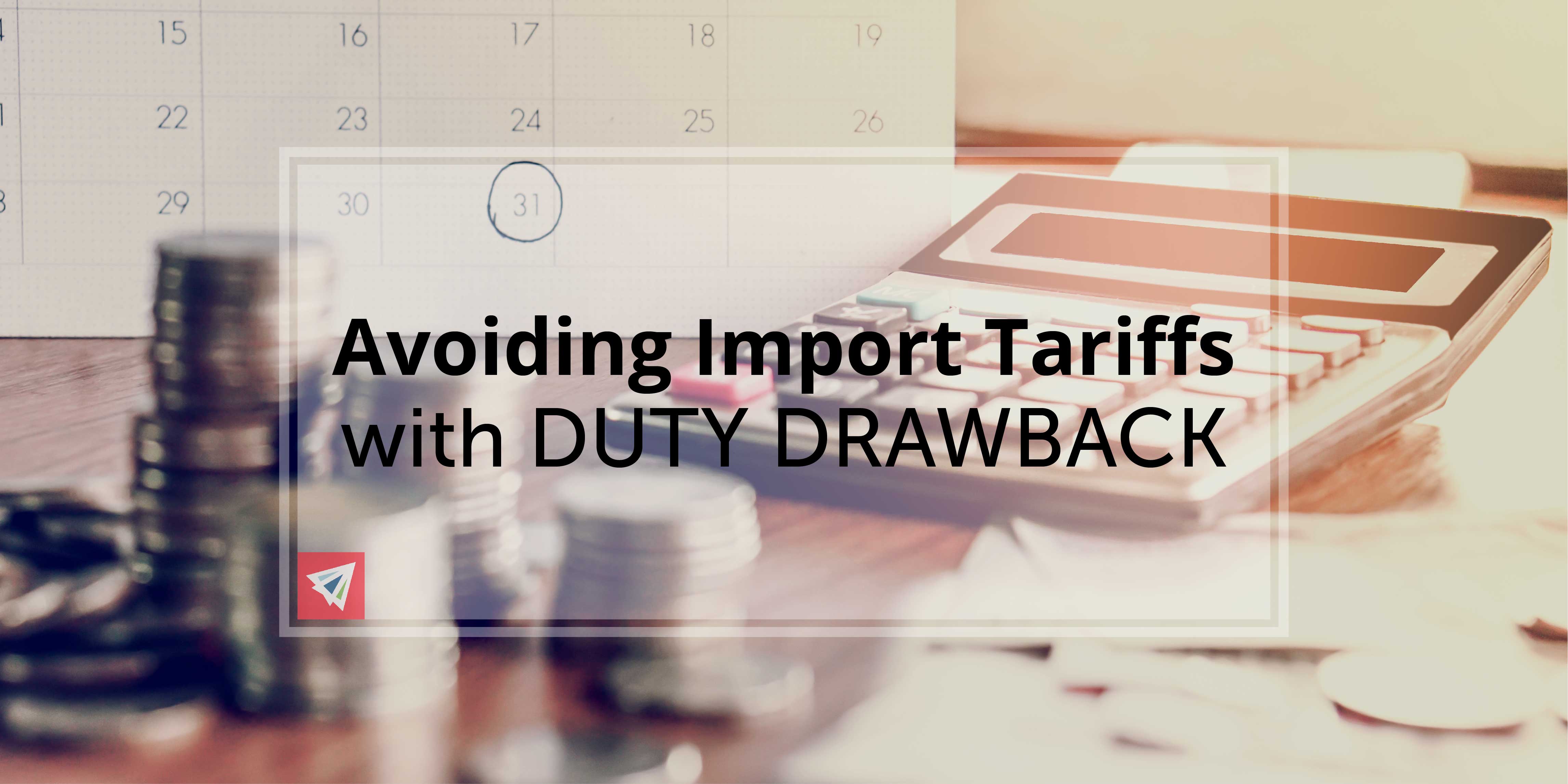Who wants a refund on all tariffs they pay to Customs for their U.S. imports?
We thought so. Depending on the reason for you imports, you may be eligible for a duty drawback. This is a method by which U.S. importer’s can be refunded their duty payments so long as their goods are being moved out of the country in a timely manner. If you are importing goods to the U.S. only temporarily, you may be able to avoid import tariffs all-together. Here’s how:
Duty Drawback: Definition and Different Types
As stated before, a Duty Drawback is a way for companies to reclaim previously paid duty taxes on U.S. imports. Shippers are eligible for this so long as the goods they are reclaiming duty charges for are being re-exported from the country in a reasonable window of time. This is often the case with goods that are being imported for value-added services or tradeshows, exhibitions, lab studies, and other international events. If you are just temporarily importing a good not for value-added services or re-manufacturing, a Carnet document will be used.
Customs understands there are a variety of reasons you may need to file a claim for a duty drawback. As a result, they have created a few different types of duty drawbacks based on your conditions.
Manufacturing Duty Drawback
A manufacturing Duty Drawback can be requested for materials being imported to the U.S. for the sole purpose of producing a product that will be exported. This would be the type of duty drawback used in the case of value-added services. The shipper must prove to Customs that the imported products were used in the merchandise being exported.
To file a manufacturing Duty Drawback, the importer must complete the following applications for the port where the claims are filed:
- Manufacturer’s Drawback Ruling
- Accelerated Payment Privilege
The shipper will need these documents on hand: Import Purchase Order, Import Purchase Invoice, Receiving Record, Entry Summary, Production Record, Export Sales Invoice, Export Bill Of Lading
The window of time for a manufacturing duty drawback is relatively long – 8 years in total. In order to be eligible, the goods must be produced within 5 years of arrival to the U.S., and the claim must be files within 3 years of the date of export from the country. The exact breakdown of the event timeline can be found in an image here.
Unused Merchandise Duty Drawback
The aptly named, “Unused Merchandise” Duty Drawback is an option for shippers who import goods that are being re-exported (either due to distribution or rejection) in unused condition. The difference between this and Manufacturing Duty Drawback is that U.S. Customs must be warned prior to the export of the goods so they may examine the container and confirm the unused condition of the cargo.
If a shipper wants to file a Duty Drawback claim for unused merchandise, they must fill out the following application documents:
- Waiver of Prior Notice
- One Time Waiver of Prior Notice
- Accelerated Payment Privilege
Similar to before, the shipper must provide the following documents to Customs: Import Purchase Order, Import Purchase Invoice, Receiving Record, Entry Summary, Export Sales Invoice, Export Bill Of Lading
Shippers have a maximum 6 year window in which the claim can be filed. More specifically, the unused merchandise must have been exported within a maximum of 3 years of the date of import, and the claim must have been filed within a maximum of 3 years after the date of export.
Unused Substitution Merchandise Duty Drawback
One of the more unique Duty Drawback scenarios involves a claim filed for duty refunds for an export of substituted goods that are “commercially interchangeable” with the original imported goods. In other words, a shipper may import unused goods, keep those goods, and export different goods that are “commercially interchangeable” with the goods in the original import and claim their Duty Drawback.
The same applications must be filled out as a regular Unused Merchandise Duty Drawback with the addition of the Commercially Interchangeable Ruling document. This application can take 3-4 full months for approval.
Customs requires these documents to be handed over in order to claim an Unused Substitution Merchandise Duty Drawback: Import Purchase Order, Import Purchase Invoice, Receiving Record, Entry Summary, Export Purchase Order, Export Sales Invoice, Export Bill Of Lading.
The time window for filing a Duty Drawback claim remains the same as the regular Unused Merchandise Duty Drawback.
Conclusion
There are a variety of reasons that a U.S. based shipper may import goods only temporarily before re-exporting the product(s). A couple possibilities are value-added services or an accidental/incorrect purchase order (so long as the goods are exported in unused condition). Shipper’s may file a claim for a Duty Drawback which grants them permission to reclaim their duty payment so long as they qualify all necessary criteria for the type of Duty Drawback they applied for.
If you would like more information on the different types of Duty Drawbacks and how you may be eligible, reach out to one of our team members! We are happy to help you out.
